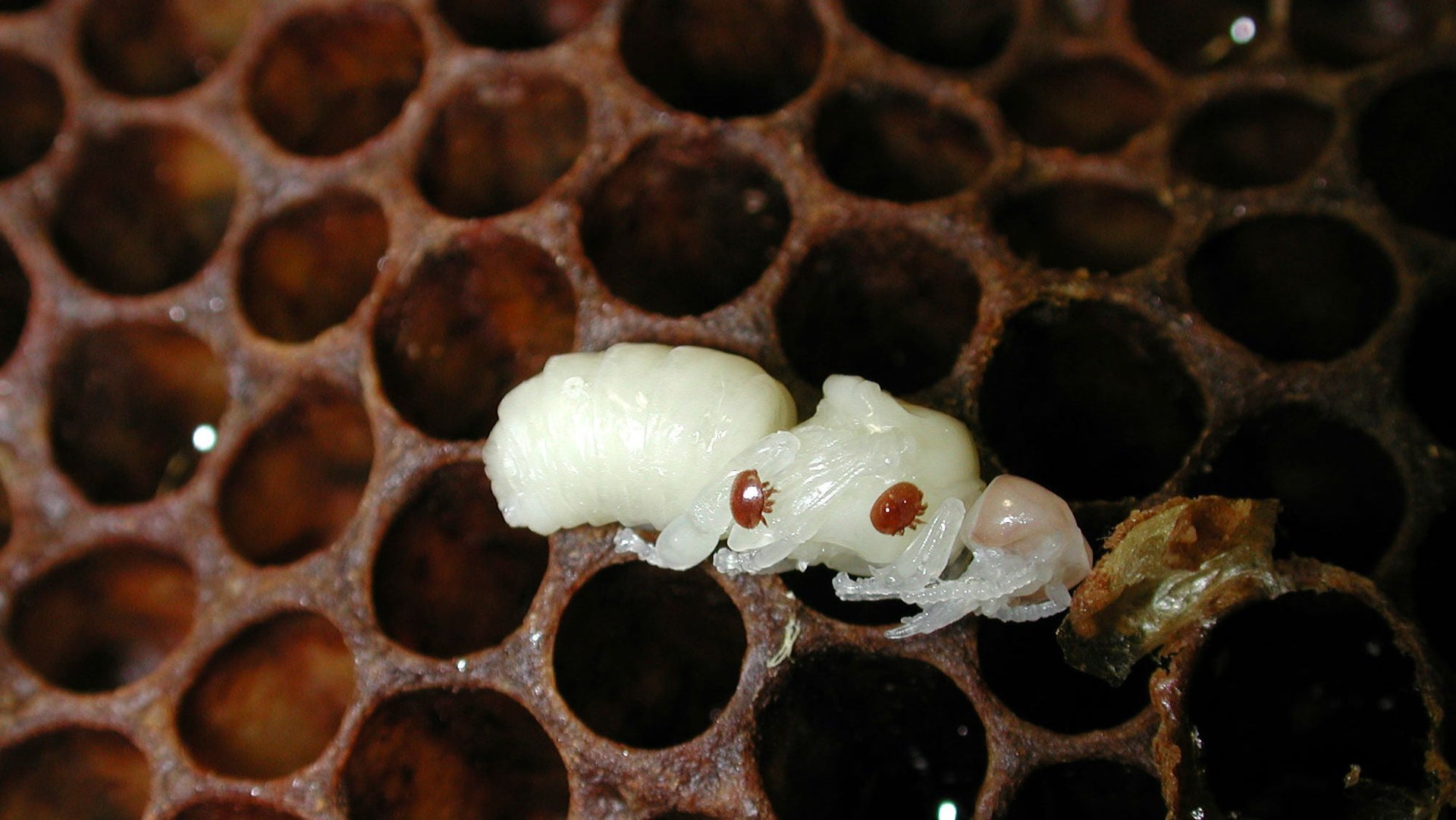Bees are being duped by mites that smell like other bees
What’s killing the bees? One likely answer: A honeybee parasite called the varroa mite, which can hide in plain sight amid bee colonies by manufacturing bee-like smells.


What’s killing the bees? One likely answer: A honeybee parasite called the varroa mite, which can hide in plain sight amid bee colonies by manufacturing bee-like smells.
Scientists already knew that these mites were masters of mimicry: Earlier research showed that the aptly named Varroa destructor can not only mimic bees’ identifying scents, but match them as their hosts grow up. A study published yesterday in Biology Letters revealed that the varroa mite can also adapt if it’s moved from one bee species to another. The research team, a US-Chinese-French collaboration, took mites living on European honeybees and transplanted them to Asian honeybees, and vice versa, and found that in both cases the mites changed the combination of chemicals they emit to appear more similar to their hosts.
Smell is an important trait for insects, especially bees. It’s one of the ways they keep track of who’s meant to be in the hive and who’s not. Bees can smell an intruder, and in order to protect the hive, will kill an outsider within five minutes.
Zachary Huang, lead author of the paper and an entomologist at Michigan State University, told Quartz that even though the researchers measured the chemical change after eight days, Huang told Quartz he believes it only took the mites two to three days to adapt to their new hosts.
Varroa mites are the biggest pest threat to Western honeybee populations. Originally, they only infected Asian honeybees; they invaded the European species in the 1940s and 50s, and finally made their way to the US in 1987. Previously, only about 15% of American honeybees died each winter. Over the past winter, the figure was 42.1%. Mites are thought to be partly responsible, but other causes for the epidemic of bee deaths are believed to include pesticides and the loss of their natural habitats to intensive agriculture.
In May, the White House released a national strategy to try to reduce honeybee mortality to only 15% in the next decade. Huang worries, though, that the mites may prevent this goal from being met. “I’m not sure we’ll be able to go back to 15%,” he told Quartz. “It’s a shame, because beekeeping used to be so much simpler.”